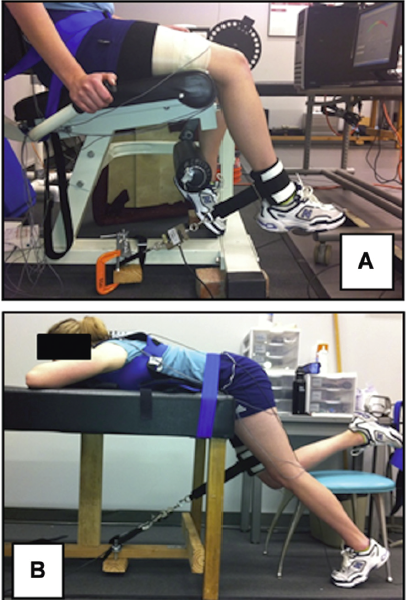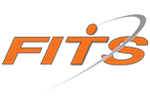After reading research I take some time to think about the take home points, how I can apply it to my practice (either performance or in clinic), additional questions that pop into my head, concerns about the methodology, and random thoughts. I’ll provide references to back my thoughts when I can. The intent of “Thoughts After Reading Research” is to catalog my thoughts and to spark sharing. Hopefully, readers will find it valuable.
What did I Read:[1]
Thoughts
- It is very important to appreciate GLUT MAX functions as a HIP ABDUCTOR on landing[2]. Hip abduction moment is created by an orchestra of muscles in a closed kinetic chain. Believing it is one or a few muscles is incorrect. Likewise trunk musculature activation and trunk position also plays a large role in pelvic control or in generating hip abduction moment. [3-9] In personal communication with several researchers (Tyson Beach, David Frost, Chris Power), trunk control is often prioritized over hip knee control (meaning the trunk will show signs of dysfunction prior to the knee).
- What is the value of isometric muscle testing? Studies use isometric testing a lot. Sure we gain a “measure of force”, which has been used to calculate rate of force development[10], moments elsewhere in the body, and to identify force producing symmetry between sides of the body but what is the relevance? It is like taking a snap shot in time, which is not aligned with the complete story. The reality is The movement system is dynamical[11, 12] – if you are a health care practitioner or strength and conditioning professional that like FMS or SFMA have a look at Dynamical Systems Theory – movement is not so simple….I’ll get into this at another time regarding (reliability, validity – task and specific, conceptual framework, etc.)
- Measuring peak knee valgus (abduction angle) and average knee valgus moment (Nm/kg) is smart. I would also be interested in the rate to peak knee valgus relative to foot contact or the knee velocity at some measure of time before peak knee valgus (i.e. 30ms because this is the “ACL rupture window” reported by several investigator).
- “Hip muscle strength, as opposed to knee extensor strength, may be responsible for mitigating biomechanical risk factors associated with ACL injury risk in women”[1]
- I’m amazed by how many studies and ACL injury prevention programs utilize plyometrics in recreational athletes with suspect strength qualities (defined by the typical guideline of being able to squat 1.5x body weight[13] show positive injury prevention outcomes (fewer ACL injuries + other injuries) – AMAZING[14]. Maybe it’s like the value gained in running injury strategies at decreasing vertical ground reaction loading rate.[14-18]
- Setting up the dynameter must take a lot of time. The units aren’t expensive so having them set-up wouldn’t be ridiculously expensive. I’m thinking about setting this up so I can have more metrics J It’s always valuable to quantify and track, but I’m still trying to figure out the value of isometric testing

Image Source Ref #1
- Stearns, K.M. and C.M. Powers, Improvements in Hip Muscle Performance Result in Increased Use of the Hip Extensors and Abductors During a Landing Task. Am J Sports Med, 2014.
- Németh, G. and H. Ohlsén, In vivo moment arm lengths for hip extensor muscles at different angles of hip flexion. J Biomech, 1985. 18(2): p. 129-40.
- Zazulak, B.T., et al., Deficits in neuromuscular control of the trunk predict knee injury risk: a prospective biomechanical-epidemiologic study. Am J Sports Med, 2007. 35(7): p. 1123-30.
- Farrokhi, S., et al., Trunk position influences the kinematics, kinetics, and muscle activity of the lead lower extremity during the forward lunge exercise. J Orthop Sports Phys Ther, 2008. 38(7): p. 403-9.
- Blackburn, J.T. and D.A. Padua, Sagittal-plane trunk position, landing forces, and quadriceps electromyographic activity. J Athl Train, 2009. 44(2): p. 174-9.
- Blackburn, J.T. and D.A. Padua, Influence of trunk flexion on hip and knee joint kinematics during a controlled drop landing. Clin Biomech (Bristol, Avon), 2008. 23(3): p. 313-9.
- Shimokochi, Y., et al., Changing sagittal plane body position during single-leg landings influences the risk of non-contact anterior cruciate ligament injury. Knee Surg Sports Traumatol Arthrosc, 2013. 21(4): p. 888-97.
- Shimokochi, Y., et al., The relationships among sagittal-plane lower extremity moments: implications for landing strategy in anterior cruciate ligament injury prevention. J Athl Train, 2009. 44(1): p. 33-8.
- Hewett, T.E. and G.D. Myer, The mechanistic connection between the trunk, hip, knee, and anterior cruciate ligament injury. Exerc Sport Sci Rev, 2011. 39(4): p. 161-6.
- Angelozzi, M., et al., Rate of Force Development as an Adjunctive Outcome Measure for Return-to-Sport Decisions After Anterior Cruciate Ligament Reconstruction. J Orthop Sports Phys Ther, 2012. 42(9): p. 772-80.
- Davids, K. and P. Glazier, Deconstructing neurobiological coordination: the role of the biomechanics-motor control nexus. Exerc Sport Sci Rev, 2010. 38(2): p. 86-90.
- Davids, K., et al., Movement systems as dynamical systems: the functional role of variability and its implications for sports medicine. Sports Med, 2003. 33(4): p. 245-60.
- Baechle, T., Essentials Strength Training Conditioning. 3rd ed. 2008, Toronto: Human Kinetics.
- Noehren, B., J. Scholz, and I. Davis, The effect of real-time gait retraining on hip kinematics, pain and function in subjects with patellofemoral pain syndrome. Br J Sports Med, 2011. 45(9): p. 691-6.
- Cheung, R.T. and I.S. Davis, Landing pattern modification to improve patellofemoral pain in runners: a case series. J Orthop Sports Phys Ther, 2011. 41(12): p. 914-9.
- Willy, R.W. and I.S. Davis, The effect of a hip-strengthening program on mechanics during running and during a single-leg squat. J Orthop Sports Phys Ther, 2011. 41(9): p. 625-32.
- Barrios, J.A., K.M. Crossley, and I.S. Davis, Gait retraining to reduce the knee adduction moment through real-time visual feedback of dynamic knee alignment. J Biomech, 2010. 43(11): p. 2208-13.
- Mascal, C.L., R. Landel, and C. Powers, Management of patellofemoral pain targeting hip, pelvis, and trunk muscle function: 2 case reports. J Orthop Sports Phys Ther, 2003. 33(11): p. 647-60.
